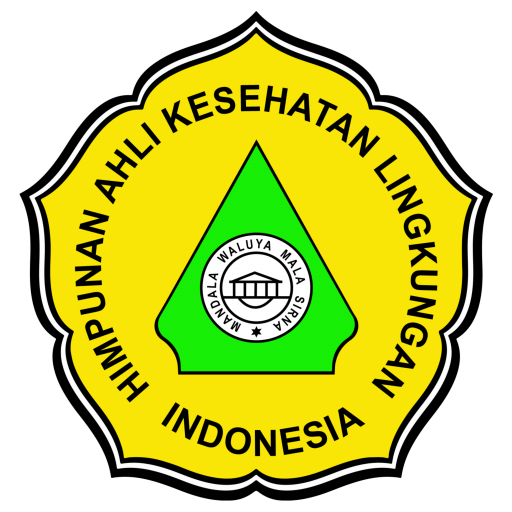EFFECTIVENESS OF LOTION EXTRACT OF VARIOUS TYPE OF PLANTS AS Aedes aegypti MOSQUITO REPPELENT
Abstract
Effort to control DHF (Dengue Hemorrhagic Fever) vectors without toxic substances by using natural and enviromentally friendly materials was natural repellent made using plants that were widely available in the community.Many types of plants contain various secondary metabolite compound substances that have the potential to be used as natural insecticides, especially as repellent of the Aedes Aegypti mosquito. The research needs to be done to determine the effectiveness of basil leaves, citronella leaves, clove leaves and betel leaves as a repellent against Aedes Aegypti mosquitoes. This research method was an experiment in the laboratory. The materials used for this research were basil leaves, citronella leaves, clove leaves, and betel leaves. The extracted leaves were then made lotions with certain formulas, tested as a natural repellent against Aedes Aegypti mosquitoes. The concentrations used were 20%, 40% and 80% as well as negative control (0%) and positive control (brand x lotions). The number of mosquitoes used in the study were 25 x 4 treatments = 100 mosquitoes. The replication or repetition was done 10 times. To find out the difference in the number of Aedes Aegypti mosquitoes that perch on the hands of probandus which has been smeared with basil leaf, citronella leaf, clove leaf and betel leaf extracts uses Anova Statistical tests and kruskal wallis. To see the difference between concentrations was tested with LSD or Mann-Whitney test. The calculation result of the number of Aedes Aegypti mosquitoes that perch before and after applying the lotion, the lowest was the lotion of citronella leaf extract 0% (11); 20% (2); 40% (1); 80% (1); The highest protection capacity of extract lotion is citronella leaves with concetrations of 20% (81,1%); 40% (95%), 80%(98,2%); There were no significant differences between the lotion concentrations of 20% and 80%, while the concentration of 40% is significantly different. Then the LSD follow-up test finds that the protective capacity of lotion of clove leaf extract is negative and citronella leaf extract is positive. The most effective protection capacity against Aedes Aegypti mosquitoes was lotion of citronella leaf extract with concentration of 40% (95%) and a concentration of 80% (98,2%), proven by the value of protection capacity that is stable even though it has been used for up to 6 hours and can exceed the protection capacity of lotion x (90,3%). It is reccomended that further research needs to be developed to optimize the lotion of citronella leaf extract 40% and 80% with orgonolaptic test of color, aroma, stickness and comfort of its use.
Keywords
Full Text:
PDFReferences
Agus Kardinan, 2006, Tanaman Pengusir Dan Pembasmi Nyamuk, Tangerang : Agromedia Pustaka.
Agus Subagiyo,2017, efektifitas ekstrak berbagai jenis tanaman sebagai repellent nyamuk aedes aegypti
Anonim. 1911. The British Farmaceutical Codex. Diterbitkan oleh Dewan Pharmaceutical Society of Great Britain.
Budi Imansyah, 2008, Ekstrak Serai, Pengusir Nyamuk Alamiah. Bandung: AKL.
Depkes RI, 1999, Indonesia Sehat 2010, Jakarta : Depkes RI.
http://enjcorp.wordpress.com, Membasmi Aedes aegypti Dengan Ekstrak Serai.
http://www.korantempo.com/news/2004/2/29, Informasi Kesehatan Tanaman Pengusir Nyamuk.
Kardinan, A., & Dhalimi, A. (2010). Potensi Adas (Foeniculum vulgare) sebagai Bahan Aktif Lotion AntiNyamuk Demam Berdarah (Aedes aegypti). Bul.Littro , 21(1), 61-68.
Komisi Pestisida, 1995, Metoda Standar Pengujian Efikasi Pestisida, Departemen Pertanian.
Mitsui. 1997. New Cosmetic Science. NewYork: Elsevier.
Sastrohamidjojo, H. 2004. Kimia Minyak Atsiri. Gajah Mada University Press.Yogyakarta.
Setyaningsih, Dwi., dkk. 2013. Aplikasi Minyak Sereh Wangi (Citronella Oil) Dan Geraniol Dalam Pembuatan Skin Lotion Penolak Nyamuk. Jurnal Teknik Industri PertanianIPB. Vol. 17(3),97-10
Sri Astuti dan Sukowati, 2002, Masalah Penyakit Tular Vektor, Kebijakan Penelitian dan Pengembangan Vektor di Indonesia, Seminar II Peringatan Hari Nyamuk di BPVRP Salatiga.
Subiyakto Sudarmo, 1991, Pestisida, Yogyakarta : Penerbit Kanisius
Undang-undang Republik Indonesia Nomor 23 Tahun 1997 tentang Pengelolaan Lingkungan Hidup.
World Health Organization / Organisasi Kesehatan Dunia (WHO), Demam Berdarah Dengue: Diagnosis, Pengobatan, Pencegahan dan Pengendalian Edisi 2, Jakarta : Penerbit Buku Kedokteran EGC.
Xue, R.D., Barnard, D.R., & Ali, A. (2003). Laboratory evaluation of 18 repellent compounds as oviposition deterrents of Aedes albopictus and as larvicides of Aedes aegypti, Anophelesquadrimaculatus, and Culexquin-quefasciatus. J Am Mosq ControlAssoc , 19(4), 397-403.
DOI: https://doi.org/10.31983/keslingmas.v39i4.6588
Article Metrics
Refbacks
- There are currently no refbacks.

Buletin Keslingmas (p-ISSN : 0215-742X, e-ISSN : 2655-8033 ), diterbitkan oleh Jurusan Kesehatan Lingkungan Politeknik Kesehatan Kemenkes Semarang Jl Raya Baturaden Km. 12 Purwokerto, Jawa Tengah, Indonesia. Telp/Fax. 0281-681709
Email : buletinkeslingmas@poltekkes-smg.ac.id
Buletin Keslingmas is licensed under a Creative Commons Attribution 4.0 International License

.png)
.png)
.png)









